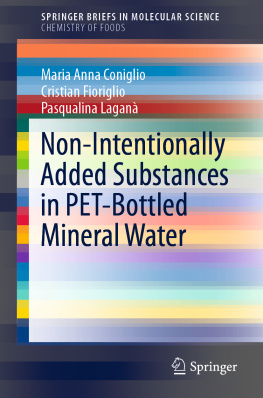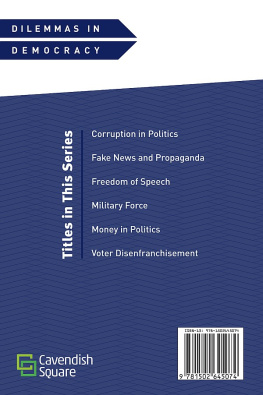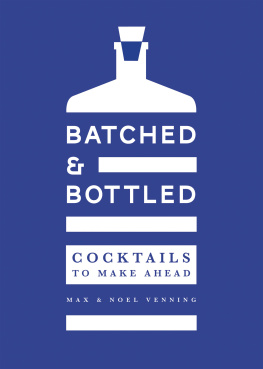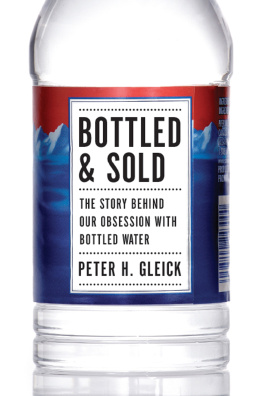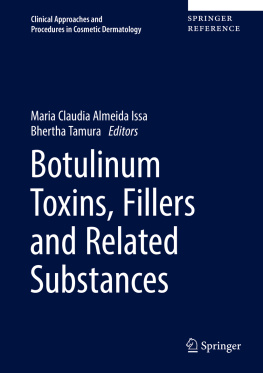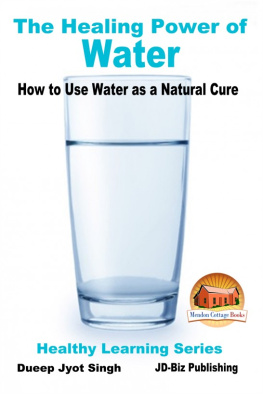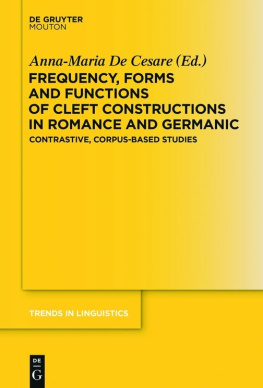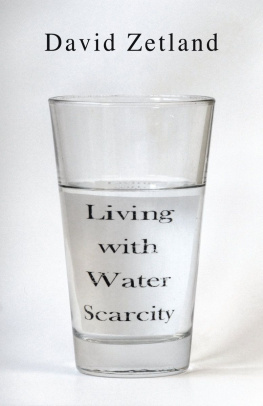Maria Anna Coniglio - Non-Intentionally Added Substances in PET-Bottled Mineral Water
Here you can read online Maria Anna Coniglio - Non-Intentionally Added Substances in PET-Bottled Mineral Water full text of the book (entire story) in english for free. Download pdf and epub, get meaning, cover and reviews about this ebook. year: 2020, publisher: Springer Nature, genre: Children. Description of the work, (preface) as well as reviews are available. Best literature library LitArk.com created for fans of good reading and offers a wide selection of genres:
Romance novel
Science fiction
Adventure
Detective
Science
History
Home and family
Prose
Art
Politics
Computer
Non-fiction
Religion
Business
Children
Humor
Choose a favorite category and find really read worthwhile books. Enjoy immersion in the world of imagination, feel the emotions of the characters or learn something new for yourself, make an fascinating discovery.
- Book:Non-Intentionally Added Substances in PET-Bottled Mineral Water
- Author:
- Publisher:Springer Nature
- Genre:
- Year:2020
- Rating:5 / 5
- Favourites:Add to favourites
- Your mark:
- 100
- 1
- 2
- 3
- 4
- 5
Non-Intentionally Added Substances in PET-Bottled Mineral Water: summary, description and annotation
We offer to read an annotation, description, summary or preface (depends on what the author of the book "Non-Intentionally Added Substances in PET-Bottled Mineral Water" wrote himself). If you haven't found the necessary information about the book — write in the comments, we will try to find it.
Non-Intentionally Added Substances in PET-Bottled Mineral Water — read online for free the complete book (whole text) full work
Below is the text of the book, divided by pages. System saving the place of the last page read, allows you to conveniently read the book "Non-Intentionally Added Substances in PET-Bottled Mineral Water" online for free, without having to search again every time where you left off. Put a bookmark, and you can go to the page where you finished reading at any time.
Font size:
Interval:
Bookmark:

The series Springer Briefs in Molecular Science: Chemistry of Foods presents compact topical volumes in the area of food chemistry. The series has a clear focus on the chemistry and chemical aspects of foods, topics such as the physics or biology of foods are not part of its scope. The Briefs volumes in the series aim at presenting chemical background information or an introduction and clear-cut overview on the chemistry related to specific topics in this area. Typical topics thus include:
Compound classes in foodstheir chemistry and properties with respect to the foods (e.g. sugars, proteins, fats, minerals, )
Contaminants and additives in foodstheir chemistry and chemical transformations
Chemical analysis and monitoring of foods
Chemical transformations in foods, evolution and alterations of chemicals in foods, interactions between food and its packaging materials, chemical aspects of the food production processes
Chemistry and the food industryfrom safety protocols to modern food production
The treated subjects will particularly appeal to professionals and researchers concerned with food chemistry. Many volume topics address professionals and current problems in the food industry, but will also be interesting for readers generally concerned with the chemistry of foods. With the unique format and character of SpringerBriefs (50 to 125 pages), the volumes are compact and easily digestible. Briefs allow authors to present their ideas and readers to absorb them with minimal time investment. Briefs will be published as part of Springers eBook collection, with millions of users worldwide. In addition, Briefs will be available for individual print and electronic purchase. Briefs are characterized by fast, global electronic dissemination, standard publishing contracts, easy-to-use manuscript preparation and formatting guidelines, and expedited production schedules.
Both solicited and unsolicited manuscripts focusing on food chemistry are considered for publication in this series. Submitted manuscripts will be reviewed and decided by the series editor, Prof. Dr. Salvatore Parisi.
To submit a proposal or request further information, please contact Tanja Weyandt, Publishing Editor, via tanja.weyandt@springer.com or Prof. Dr. Salvatore Parisi, Book Series Editor, via drparisi@inwind.it or drsalparisi5@gmail.com
More information about this subseries at http://www.springer.com/series/11853

This Springer imprint is published by the registered company Springer Nature Switzerland AG
The registered company address is: Gewerbestrasse 11, 6330 Cham, Switzerland
This book deals with polyethylene terephthalate (PET) bottled water, whose global market size is expected to reach around USD 350 billion by 2021, following 10% year-on-year growth. Our goal is to define and formulate a comprehensive analysis of risk associated with drinking PET-bottled water.
In recent years, concerns are rising about the safety of PET foods packaging due to the possible migration of chemical compounds from PET to the water contained into the bottle, which may pose health risk to consumers. These chemicals are called NIAS, acronym of non-intentionally added substances, and they are supposed to have potential estrogenic and/or anti-androgenic activities and to be cancerogenic or toxic to humans. Our approach is to report data from the international scientific literature examining what happens when the polymer undergoes specific conditions, such as exposure to ultraviolet light/high temperature, ageing or humidity.
The introductory chapter highlights the relationship between water and health. Taking into consideration the recommended daily water intake, the importance of good hydration is argued. The second chapter deals with the global bottled market. The demand for bottled water is witnessing significant growth due to organoleptic and health-related reasons. Concerns about tap water risks may contribute to bottled water consumption. In particular, demographic and socio-economic variables as well as information provided by the mass media are argued as factors related to the consumers attitudes towards bottled drinking waters. Furthermore, European Union (EU) and United States of America (U.S.) legislation on bottled waters is examined. The third chapter deals with the fundamentals of PET chemistry and the elementary PET-bottled manufacturing steps. It is a guide to the reader for the comprehension of what NIAS are and how they can migrate from the wall of PET bottle to the water inside it. For this reason, special emphasis is given to the additives used during the synthesis of the polymer. In addition, specific EU and U.S. regulations on plastic materials and articles intended to come into contact with foodstuffs are examined. Finally, the last chapter describes NIAS as a result of the interactions between different ingredients in the packaging materials, as well as the degradation processes and the impurities present in the raw materials used for their production. Phthalates, aldehydes and volatile organic compounds (VOC) are examined. Although some of them may be cancerogenic or toxic to humans, it is likely that in the majority of cases, due to their very low levels, these substances will not be of any health concern.
Font size:
Interval:
Bookmark:
Similar books «Non-Intentionally Added Substances in PET-Bottled Mineral Water»
Look at similar books to Non-Intentionally Added Substances in PET-Bottled Mineral Water. We have selected literature similar in name and meaning in the hope of providing readers with more options to find new, interesting, not yet read works.
Discussion, reviews of the book Non-Intentionally Added Substances in PET-Bottled Mineral Water and just readers' own opinions. Leave your comments, write what you think about the work, its meaning or the main characters. Specify what exactly you liked and what you didn't like, and why you think so.

